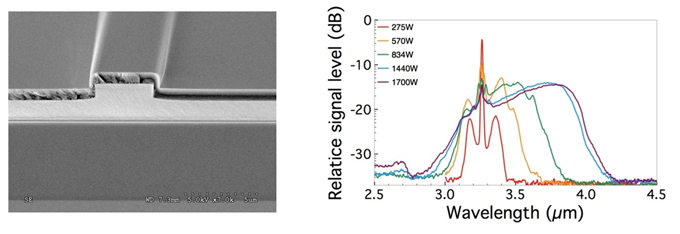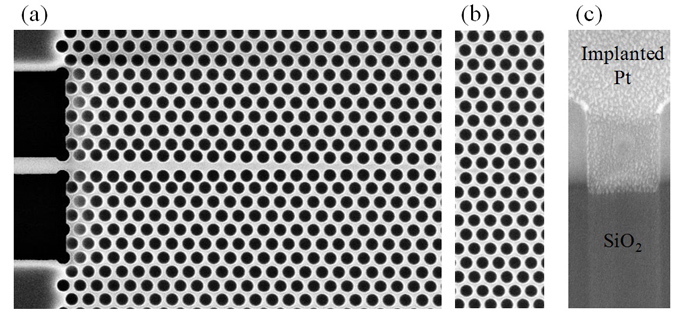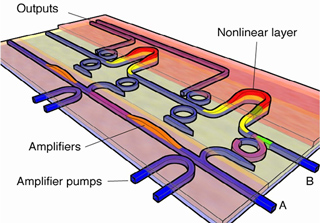In addition to the work on chalcogenide photonics supported by CUDOS, a number of other photonics projects are pursued within LPC which use different optical materials tailored for specific applications.
Dr Duk-Yong Choi is supported by an ARC Future Fellowship to develop silicon and germanium waveguide devices to create integrated optical sources and detectors on a chip. Fabrication of Germanium layers with a silicon nanophotonic circuits involves a germanium condensation approach where parts of an SOI wafer are selectively doped with Ge using high-energy ion implantation. The Ge is then condensed to form a crystalline layer by selective oxidation of the Si. This approach aims to integrate Ge detectors and Ge lasers on the silicon platform. The work accesses other facilities within the School including the high energy ion implanters and the facilities of the Australian National Fabrication Facility.

A teflon-coated chalcogenide rib waveguide developed for mid-IR supercontinuum generation by CUDOS team within LPC.
Dr Zhiyong Yang is supported by an ARC DECRA award to undertake research into novel micro-optical sensors for sensitive molecular fingerprint spectroscopy in the mid-infrared. This project overlaps with some of the research within CUDOS and takes advantage of the chalcogenide platform that provide the necessary high mid-infrared transparency for mid-IR photonic devices. Microring resonators offer sensitivity to refractive index through a shift in their resonant frequency and to absorption through a change in Q induced by the target molecule. Microring resonators made from chalcogenides are being developed to support this program.


Research into tellurite glass photonics is led by Dr Steve Madden and Dr Khu Vu. These glasses are broad class of multi-components oxides containing predominantly Tellurium Oxide (TeO2) and are promising for a wide range of applications of generating mid-infrared light for sensing, spectroscopy, telecommunications. Important optical properties of Tellurite include: being a very good hosts for rare earth ions (Erbium, Thulium etc which can be used for laser amplifier), having high Raman gain coefficient (30-60 times higher than silica) and Raman shift at about double that of silica. Furthermore, Tellurite glasses can be poled to achieve second order nonlinearities with coefficient comparable with those of crystalline materials. This property can be used for electro-optic devices or frequency conversion via parametric mixing. Tellurite glasses have also been recognised for its third order nonlinearity as having the largest coefficient between oxide based glasses. Because they have band edge at very short wavelength, 300-400nm, they also can handle very high optical intensity without the multi-photon absorption and photo darkening that affect most of current materials currently used for thin film optical applications.
Research within LPC into quantum devices in rare earth doped crystalline oxides ultimately required the development of waveguide devices fabricated from high quality crystalline thin films. This is a challenging project that requires growth of waveguiding layers on crystalline substrates. Dr Rongping Wang leads research into the growth of Eu-doped yttrium oxide films onto lattice-matched substrates using pulsed laser deposition. The ultimate aim is to create a thin waveguide core whose luminescence properties match those achievable in bulk crystals. In the long term these could be used to fabricate quantum devices such as wide bandwidth gradient echo memories. Device properties are measured in collaboration with the Solid State and Quantum Information group led by Dr Sellars.